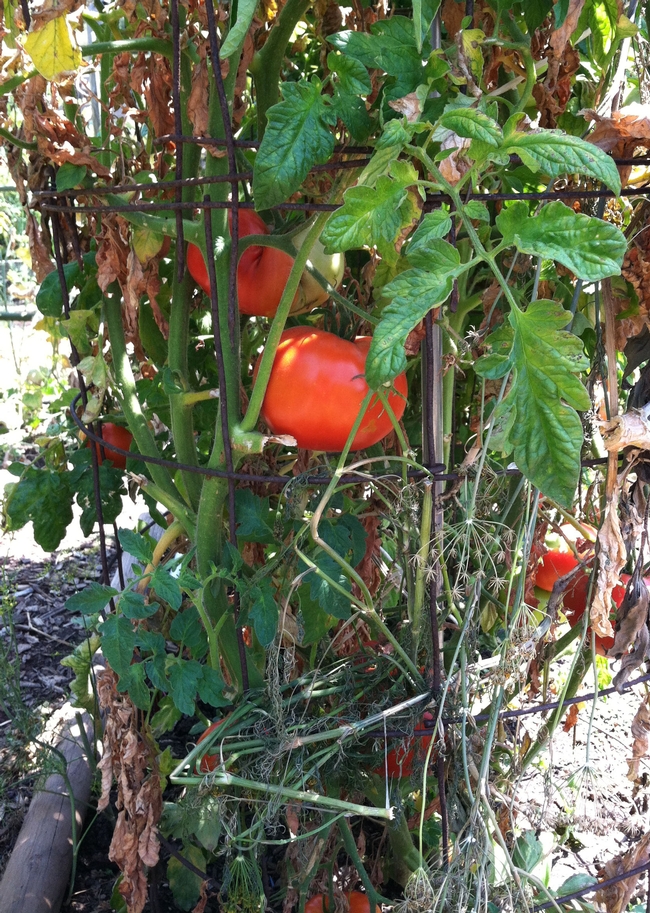
This month Susan Algert, UC Cooperative Extension nutrition advisor, published research that shows gardeners can save money by growing their own vegetables.
“Low-income people in cities may be able to improve their nutrition by eating fresh vegetables grown in community gardens,” said Algert, who works with UC Cooperative Extension in Santa Clara, San Mateo and San Francisco counties.
To better understand how community gardens affect the affordability and amount of food available, she recruited 10 gardeners in San Jose to weigh the vegetables they harvested from their community gardens during the spring and summer.
The most common crops they grew were tomatoes, squash, green beans, peppers, onions, eggplants and cucumbers.

Algert found that community gardens produced on average 2.55 pounds of food per plant over the four months. For the season, buying the same vegetables at retail prices would have cost $435 more. People saved more money by growing more high-value crops such as tomatoes and peppers that grow vertically and occupy less ground space, she learned.
“We know that community gardens can be an important source of fruits and vegetables for people who don't live near a grocery store or a farmers market,” said Algert. “This study shows that vegetables from community gardens can also be more affordable than buying from a store. That's important to people who live on a low or fixed income.”
The amount of money people save by growing their own vegetables will vary. “Our citizen scientists who worked on this study are all experienced gardeners,” she said, “A novice gardener would likely need training to get the same results.”
Currently Algert is studying the amount of food grown in backyard gardens of low-income families in San Jose.
“It's a wonderful collaboration of nutrition educators, UC Cooperative Extension small farm advisors, UC Master Gardeners, Santa Clara University and Sacred Heart/Catholic Charities,” said Algert.

In addition to fresh produce, gardeners get some exercise. “Gardening is an excellent form of physical activity,” said Algert.
The study “Vegetable output and cost savings of community gardens in San Jose, California” is published in the July edition of the Journal of Academy of Nutrition and Dietetics at http://www.andjrnl.org.
The community garden study was conducted in collaboration with the City of San Jose's Parks, Recreation and Neighborhood Services Department, which manages 18 community gardens on 35 acres of land.